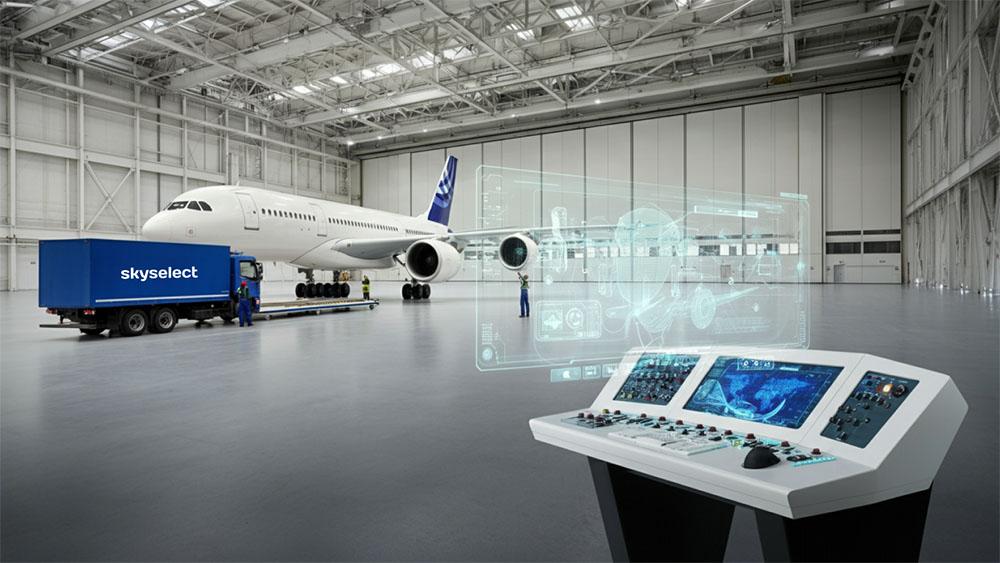
Leveraging procurement technology in the materials supply chain can improve sustainability initiatives in the aftermarket, suggest experts at SkySelect.
The industry often focuses on emissions-reduction solutions such as sustainable aviation fuels, the utilization of next generation aircraft and carbon offsets, but the sustainability benefits of using procurement technologies are often overlooked.
Tulika Dayal, chief experience officer at SkySelect, believes airlines can significantly reduce their environmental footprint, cut costs and improve their organizational operations by streamlining aircraft parts procurement and enhancing efficiency.
“One of the primary challenges airlines face is managing their complex network of parts suppliers and maintaining sufficient stock to keep their fleets operational,” says Dayal.
Traditionally, this has required carrying excess inventory and frequently shipping multiple parts orders over long distances. However, Dayal says that advancements in procurement technology are enabling airlines to reduce the number of shipments by as much as 30% while maintaining fewer parts in stock. “This not only minimizes logistics costs but also reduces carbon emissions, making airline operations more sustainable,” she says.
Dayal says airlines can address several areas critical to sustainability by improving procurement methods, including demand forecasting, sourcing, shipment consolidation and inventory management—all key essentials for optimizing the supply chain.
“Shipment consolidation is one of the most effective ways to reduce the environmental impact of aircraft parts logistics,” says Dayal. Instead of shipping parts individually or in small batches, he says procurement platforms such SkySelect enable airlines to bundle multiple parts into a single shipment, which reduces the number of shipments required, shipping costs and carbon emissions.
In one case, Dayal says an airline using SkySelect’s artificial intelligence-enabled procurement platform saw a 30% reduction in shipments.
Beyond immediate reductions in emissions and costs, Dayal says procurement technology also facilitates a more circular supply chain, particularly through surplus and used serviceable materials. “By supporting the reuse of parts rather than relying solely on new manufacturing, airlines can significantly reduce the environmental impact associated with producing new materials and extend the use of parts already in circulation,” she says.
Dayal says such procurement platforms also provide greater supply chain visibility by connecting buyers with multiple suppliers, including those offering surplus parts that might otherwise go unsold. “This focus on reusing and repurposing parts contributes to a circular economy, reducing waste and further cutting carbon emissions,” she says.
Procurement platforms use advanced algorithms and data analytics to forecast demand with the aim of ensuring that only the parts required in the near future are ordered and delivered on time. By harnessing machine learning, Dayal says airlines can predict when and where parts will be needed, minimizing the need for urgent, carbon-intensive shipments.
Another area Dayal highlights is strategic sourcing. When supported by procurement technology, strategic sourcing allows airlines to identify the most reliable and efficient suppliers. Dayal says choosing suppliers based on their proximity to operational hubs or repair facilities can significantly reduce transportation distances and associated carbon emissions.
Beyond the sustainability benefit of reducing shipments, Dayal says implementing just-in-time inventory strategies enables airlines to receive parts exactly when needed rather than holding large amounts of stock, which reduces inventory holding costs and minimizes the risk of parts becoming obsolete before they can be used.





